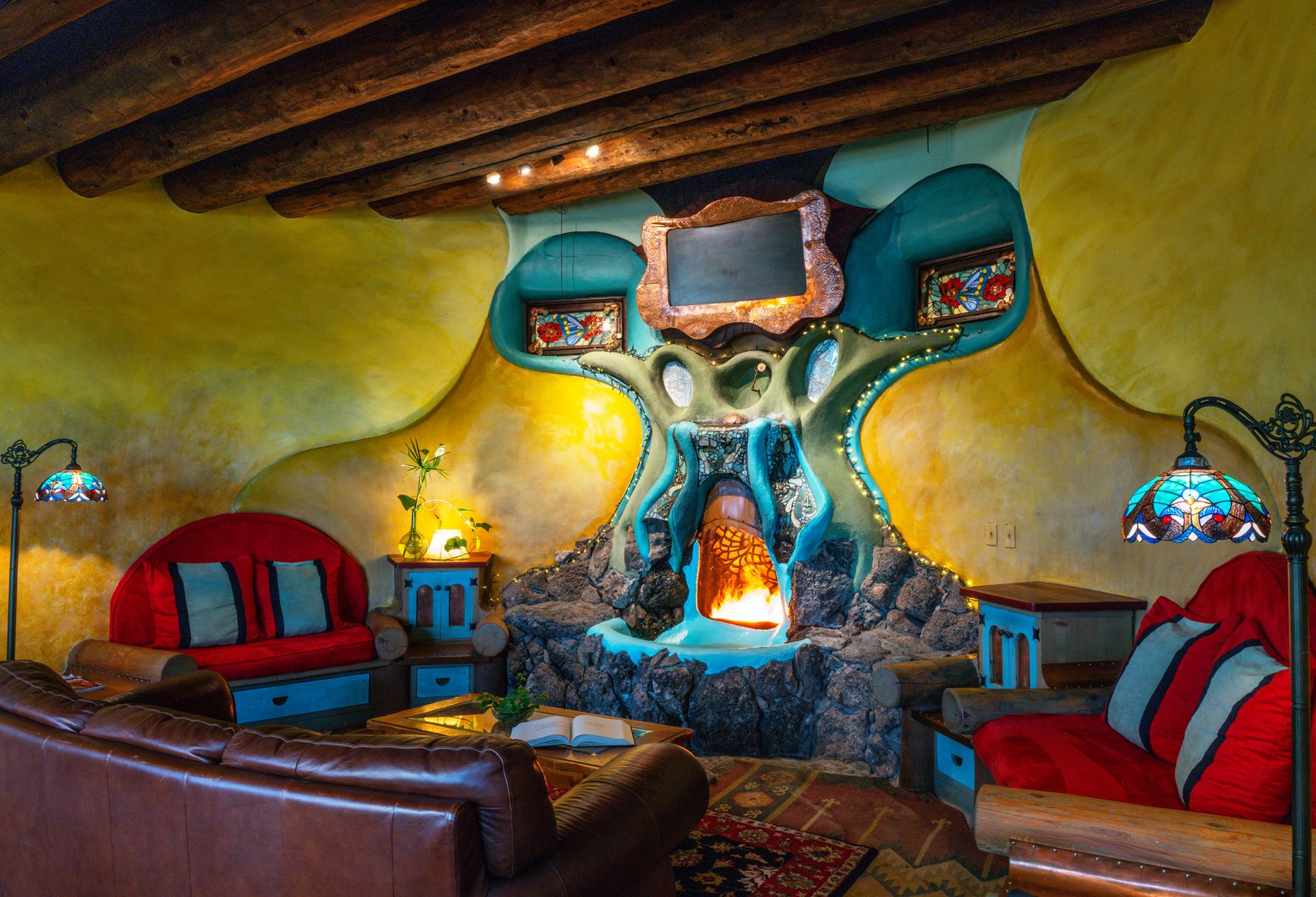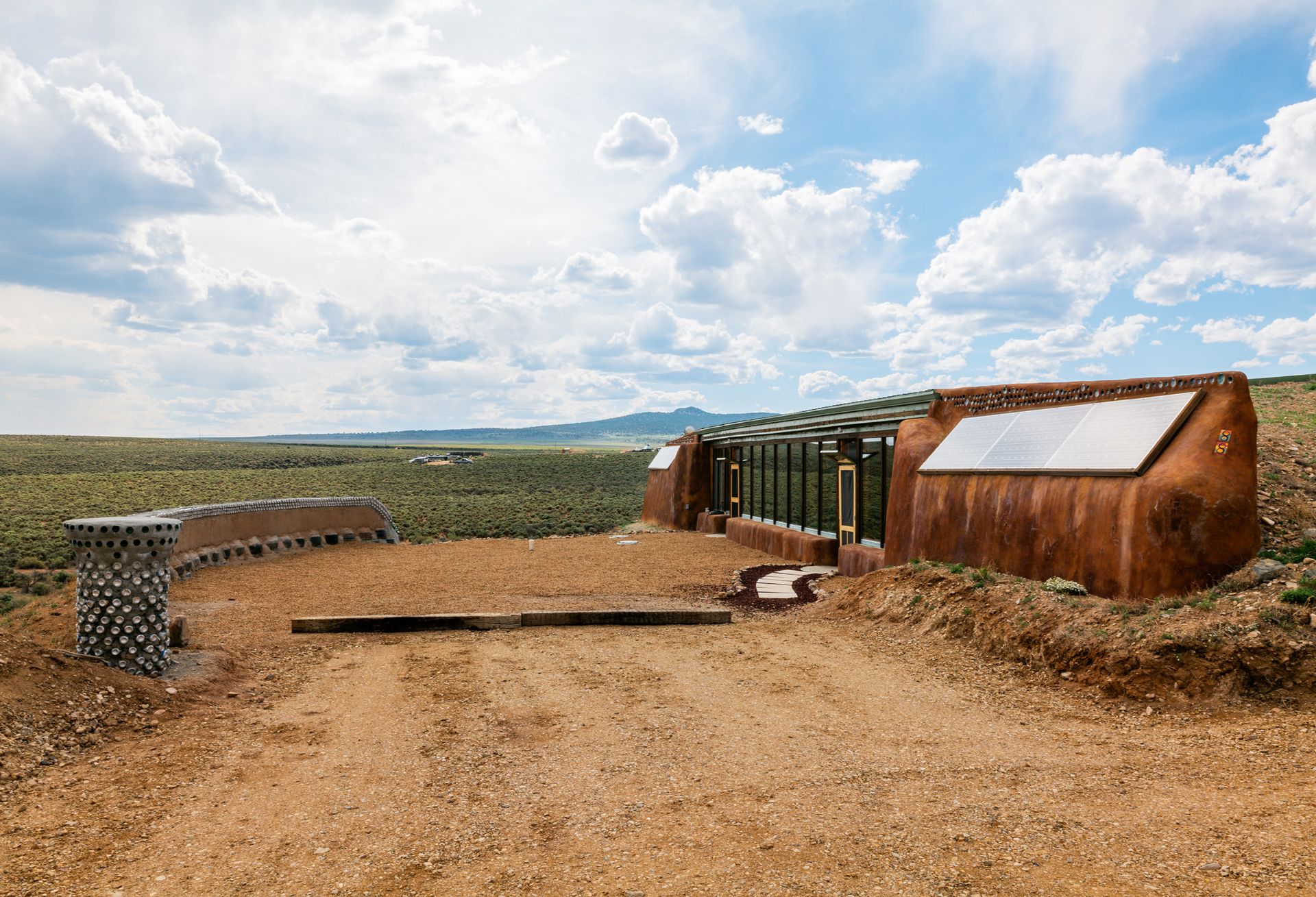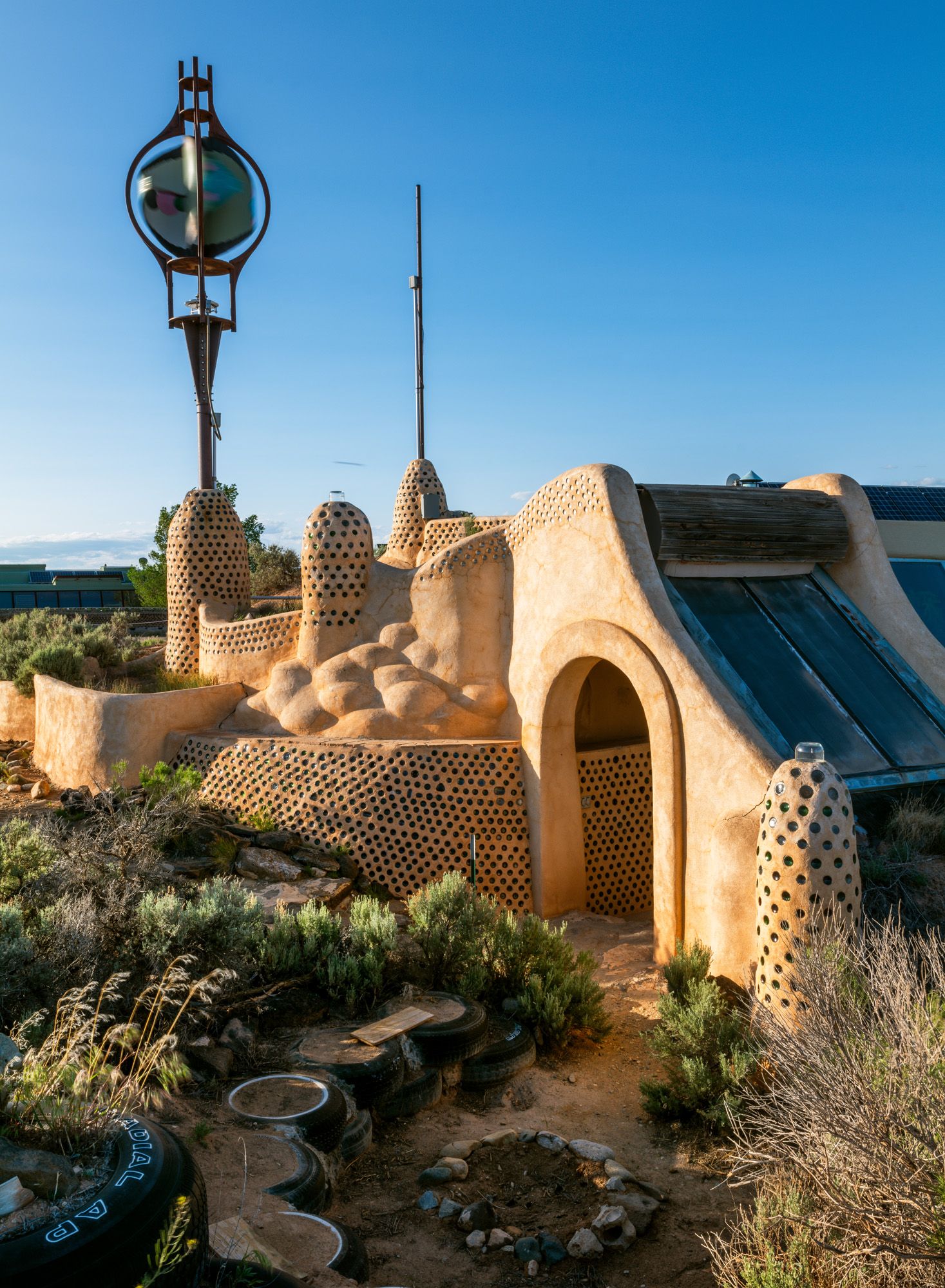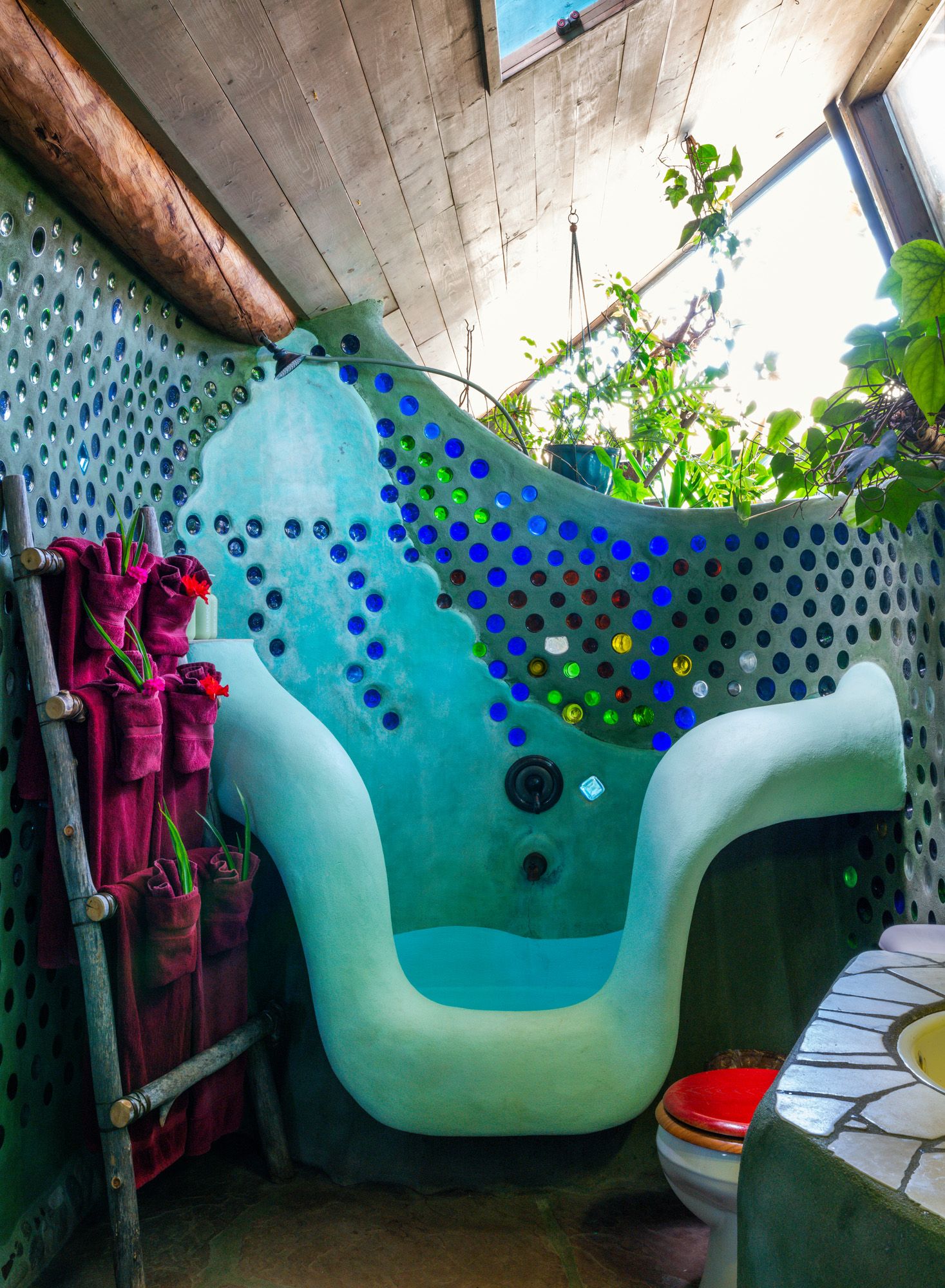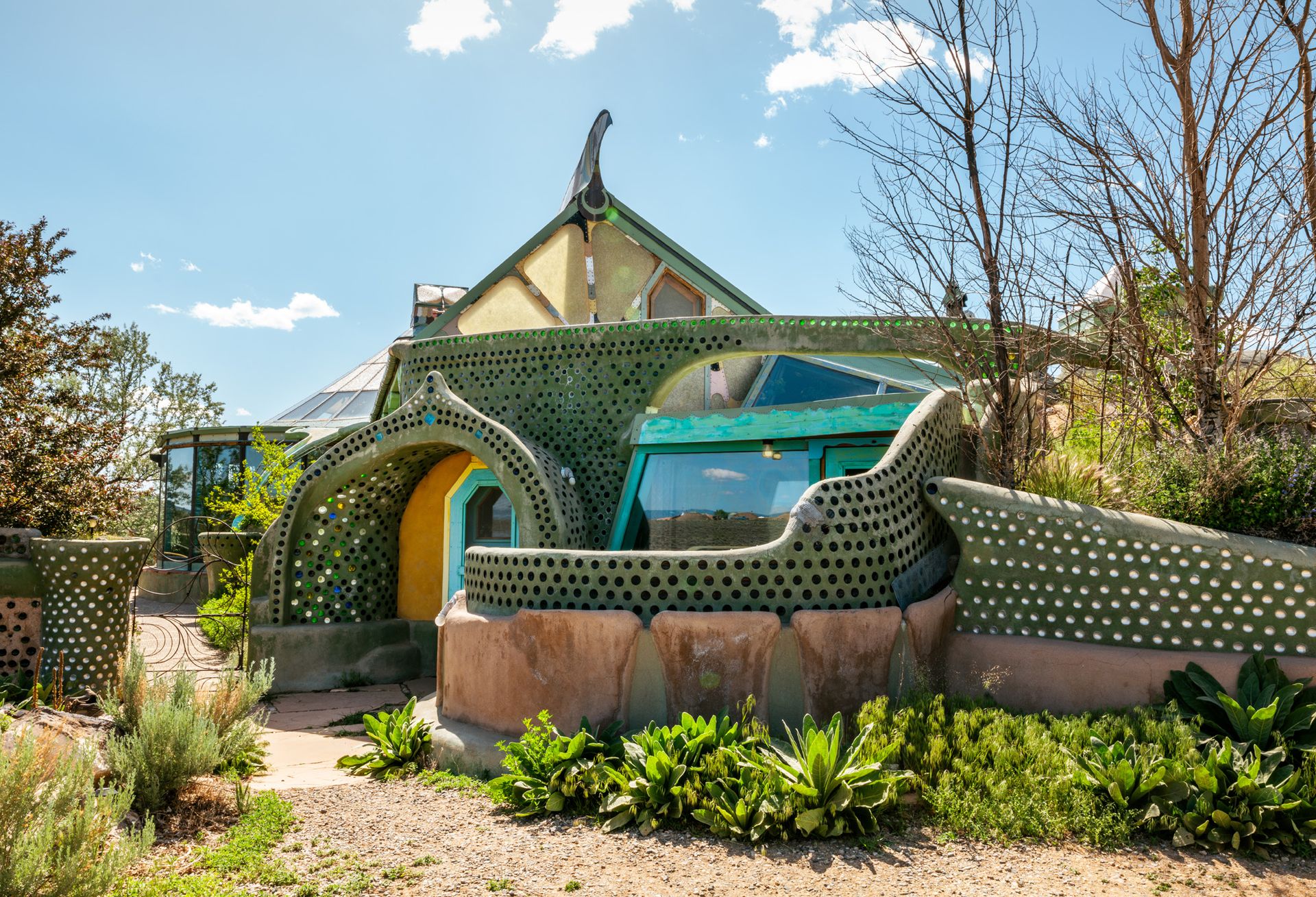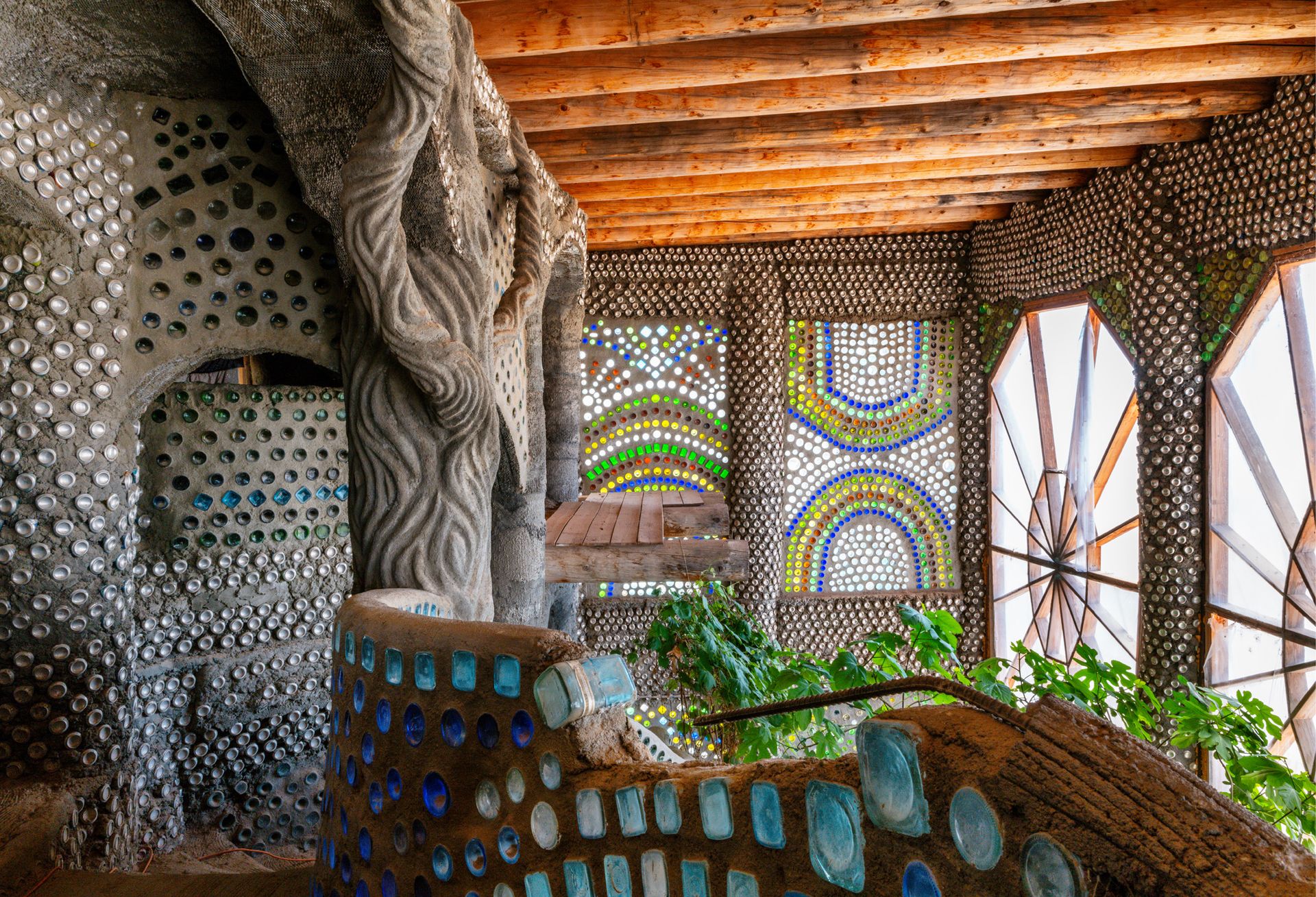Approaching Earthship in Taos, New Mexico, at dusk, landscape photographer Victoria Sambunaris (featured in our Wallpaper* USA 400, a guide to creative America) began to make out the gently sloping profiles of homes, buried in folds of a dune-like landscape. ‘It was like entering some other country, the architecture revealing itself as part of the earth, but of the earth from the earth,’ she says.
Founded in the 1970s by architect Michael E Reynolds, the Earthship community in Taos uses everything from the power of the wind and sun to recycled coloured glass bottles to create unique self-sufficient dwellings
(Image credit: Victoria Sambunaris)
Welcome to Earthship
Sambunaris was here to stay in one man’s vision for the past, present and future of housing. Michael E Reynolds (also in the Wallpaper* USA 400) founded the unorthodox utopian Earthship community here in the early 1970s, with the goal of building homes that don’t use fossil fuels or generate waste. ‘I call it soft development,’ he says, ‘They have a soft look because they’re also logically encountering the phenomena of the earth. At the same time, you’ve got your own power, your own water and your own sewage. You’re secure in the future.’
At the Earthship community’s 600-acre site, homes are buried into the landscape, the only part visible being a south-facing glazed wall, which is the simplest and least costly way of passively heating a building, as well as offering striking views
(Image credit: Victoria Sambunaris)
There are more than 60 off-grid, fully independent, self-sustaining homes in the Earthship community in Taos, and up to 3,000 across the world. Each Earthship follows a specific formula, designed by Reynolds, and is made using earth-filled tyres as structural columns buried into the land on three sides, with a south-facing glazed wall incorporating a multi-functional greenhouse. With their slanted glass roofs and fan-like designs, these often contain verdant jungles filled with fig or banana trees, tomato vines, squashes and watermelons. They also serve to capture rain water, and recycle and filter grey water for use in the home.
Some of the Earthships are available for short-stay visits, including the Phoenix, where the living room sports a waterfall that pours over a built-in gas fireplace (Image credit: Victoria Sambunaris)
With their sandy, doughy, hand-moulded walls encrusted with glistening coloured glass made from recycled bottles, Earthship architecture presents itself as Antoni Gaudí meets Mad Max in the American West. Yet, look closer and the informal, often sculptural design of the buildings is hinted at in the nearby Taos Pueblo settlement, where the ancient adobe architecture by indigenous communities, including the Red Willow people, remains. The traditional house construction in this region also uses earth mixed with water and straw, which is then either poured into forms or turned into sun-dried bricks. Reynolds named these houses as a play on spaceships, but they are more rooted and terrestrial than meets the eye.
Earthships are designed to take advantage of natural phenomena, using thermal and solar heating and cooling, solar- and wind-generated electricity, and rain water harvesting to be fully off-grid
(Image credit: Victoria Sambunaris)
Sambunaris’ goal was to photograph these homes across time and space, going out early in the morning to catch the varying light and observe the clouds and sun as they played with the architecture. ‘I was able to look at the same places at different times of day, from morning to dusk, and return to those places. Sometimes, the light hitting the cans that are used in the structure would shimmer, or a wall made of bottles would glisten as the light came through from behind it and illuminated the colours.’ In her site explorations, she ran into a homeowner walking her dog who had lived there for 27 years, as well as couples visiting for the weekend in an Airbnb.
Earthships are built using earth-rammed car tyres plastered with adobe mud, a durable material with excellent thermal insulation properties. Some are embedded with recycled materials, such as glass bottles and cans, which let in light, add colour and sparkle in the sun
(Image credit: Victoria Sambunaris)
Sambunaris’ work often takes her to remote areas, where she finds herself camping for multiple nights, but she says her most memorable experience of staying at the Earthship community was not the various ingenious technologies, or the curvilinear walls, firepits or handmade mosaics, but simply the silence. ‘It was really, really quiet,’ she says. ‘The night skies were phenomenal; the sky lit up with stars. Even when I’m camping, I hear people’s RVs and generators, and so I really appreciated the silence.’
(Image credit: Victoria Sambunaris)
While the Earthships seem like the definition of a singular experience, their architect feels they should be available for everyone. So the next challenge he is taking on is the creation of a prefabricated version, called the ‘refuge’, a two-bedroom, two-bathroom ‘market ready’ edition, which is now being developed for a wider audience. ‘I’m looking at the last 55 years as a valuable learning experience in research and development, and now I am seeing what I need to do: I want to build the equivalent of a Ford Model T for housing,’ he says.
(Image credit: Victoria Sambunaris)
The proposal is compelling and as, Reynolds points out, in the midst of a planetary-scale climate emergency, often causing power outages for days or weeks with flood or drought conditions, a readily available off-grid home is going to have market appeal. ‘Off-grid used to be an adventure or a stylised journey that young hipsters used to do. Now the writing is on the wall – the grid is failing, as well as destroying the planet. Off-grid is a secure way to live, and people are really looking for this.’
(Image credit: Victoria Sambunaris)
For many, the economic and logistical plausibility will need to be seen to be believed, but there is no doubt it is a cause worth fighting for. Sambunaris herself seemed touched by the idea and left with a sense of hope. ‘After spending a lot of time on the road in the American West, I see that there is definitely a need for someone like Reynolds who’s thinking about sustainability and affordability and housing. So how do we make that happen, where he creates the Ford Model T for housing, so that everybody can have their own home.’
(Image credit: Victoria Sambunaris)
Meanwhile, Reynolds and his Earthship team are rolling out prototypes and organising seminars and academies to teach people how to adopt and embrace an urban off-grid home. ‘Now that I know how to do it, the next lesson is learning to make it palatable and economical.’
earthship.com
victoriasambunaris.com
This article appears in the August 2024 issue of Wallpaper*, available to download free when you sign up to our daily newsletter, in print on newsstands from 4 July, on the Wallpaper* app on Apple iOS, and to subscribers of Apple News +. Subscribe to Wallpaper* today



